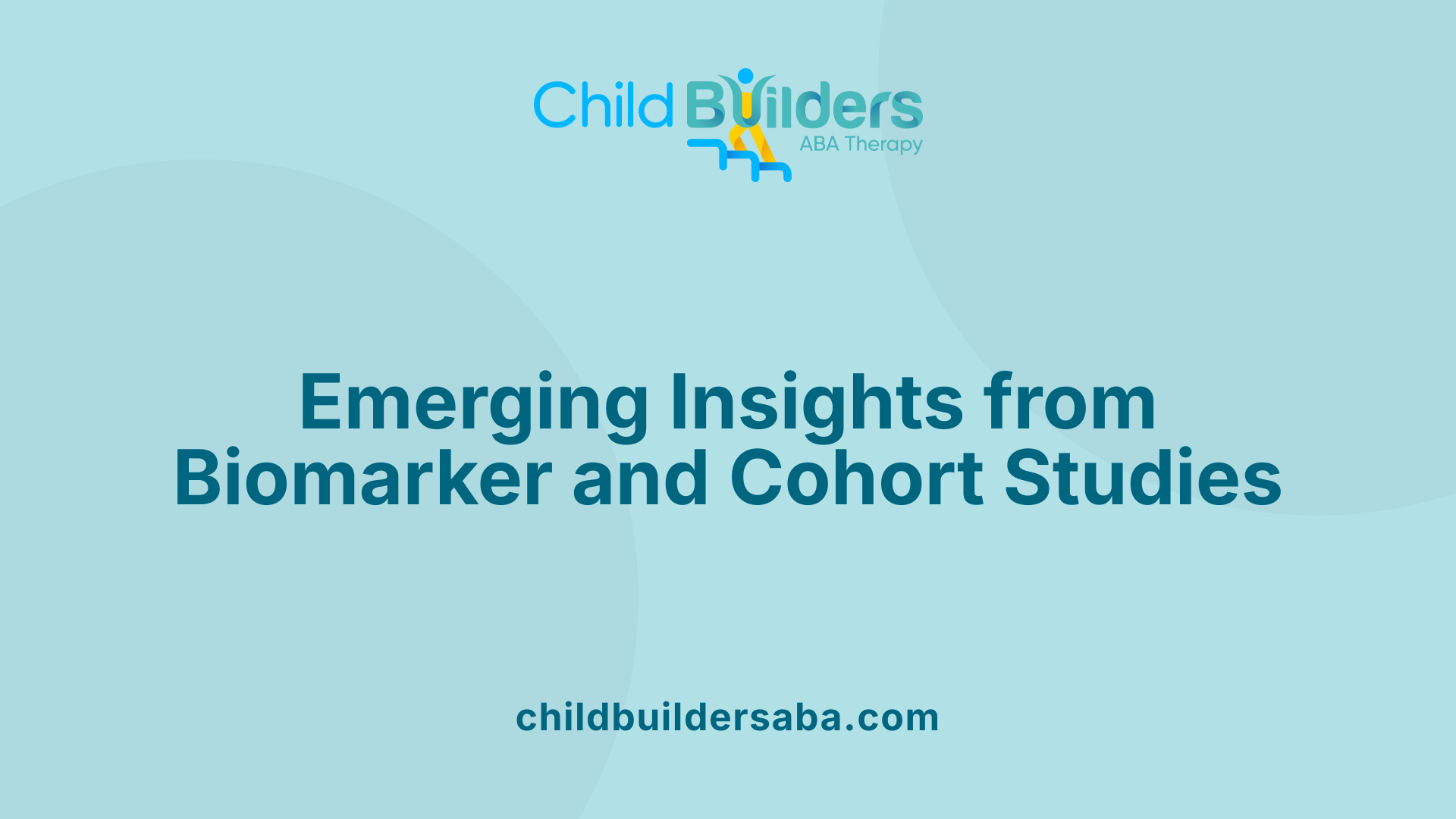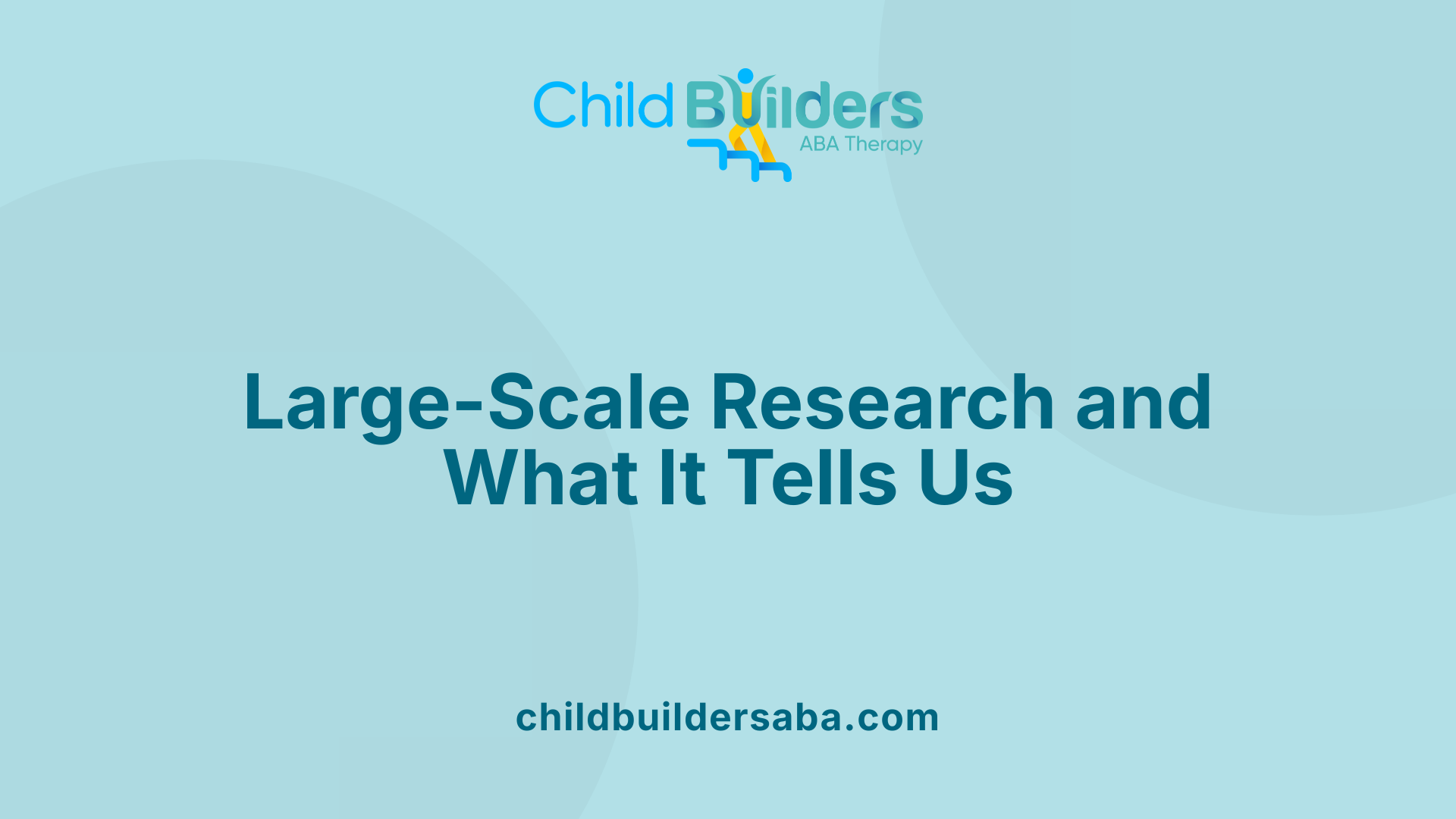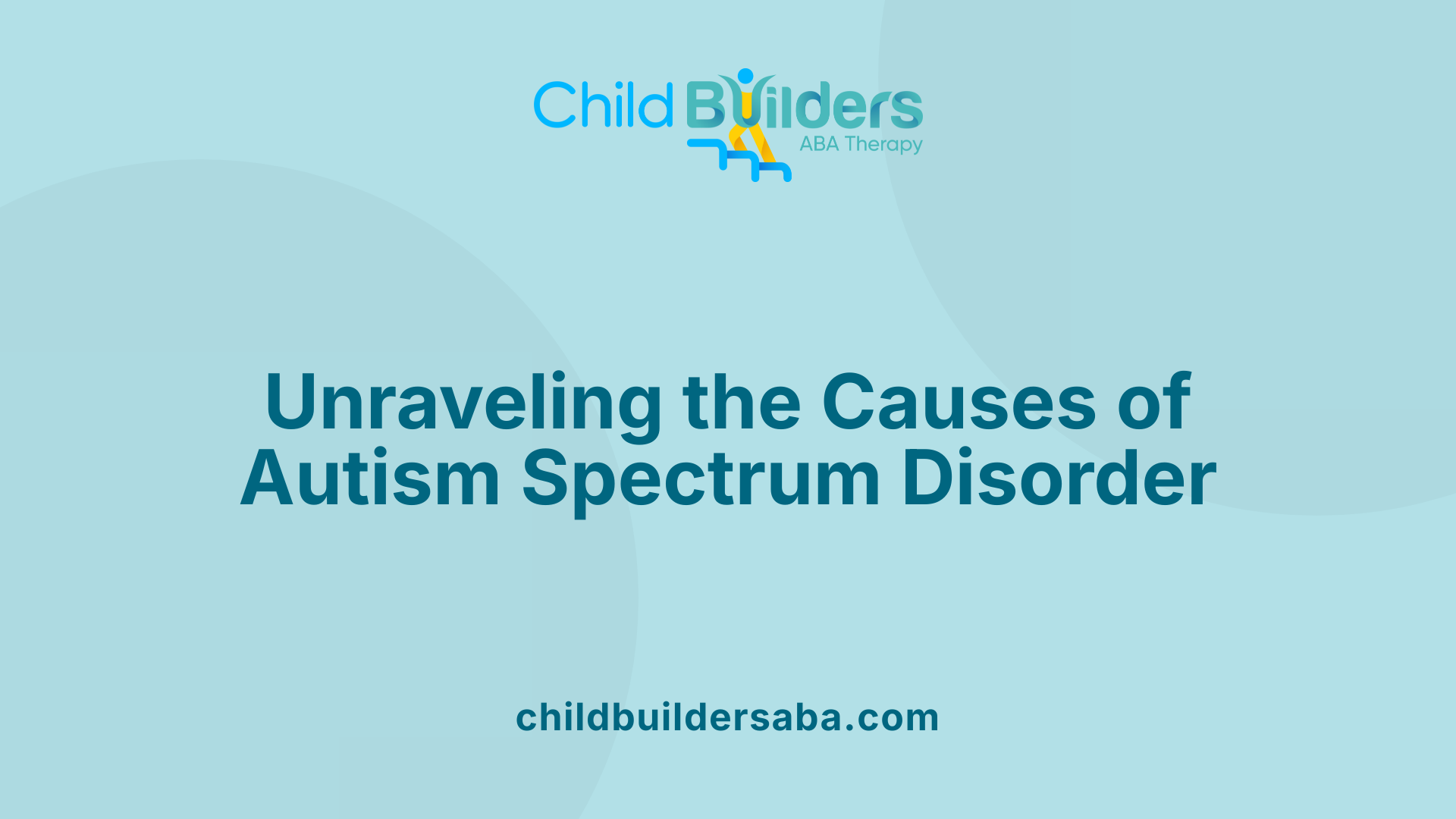Tylenol Linked to Autism & ADHD

Unpacking the Evidence and Controversy Surrounding Acetaminophen Use in Expectant Mothers
Recent scientific studies have intensified the debate over the safety of Tylenol (acetaminophen) use during pregnancy, particularly concerning its possible links to autism spectrum disorder (ASD) and attention deficit hyperactivity disorder (ADHD). While some research points to an increased risk of neurodevelopmental issues among children exposed prenatally, other large-scale studies suggest no causal relationship. This article explores the scientific findings, ongoing legal battles, and differing opinions within the medical community to provide a comprehensive overview of this complex issue.
Scientific Evidence from Biomarker Studies and Cohort Analyses
 Recent research funded by the National Institutes of Health (NIH) highlights potential links between prenatal acetaminophen exposure and neurodevelopmental disorders such as autism spectrum disorder (ASD) and attention deficit hyperactivity disorder (ADHD). A prominent study conducted by Xiaobing Wang at Johns Hopkins University measured biomarkers of acetaminophen in umbilical cord blood from 996 births within the Boston Birth Cohort. The findings indicated that children with higher levels of exposure had approximately 2.86 times the risk of developing ADHD and 3.62 times the risk of ASD compared to those with lower exposure levels.
Recent research funded by the National Institutes of Health (NIH) highlights potential links between prenatal acetaminophen exposure and neurodevelopmental disorders such as autism spectrum disorder (ASD) and attention deficit hyperactivity disorder (ADHD). A prominent study conducted by Xiaobing Wang at Johns Hopkins University measured biomarkers of acetaminophen in umbilical cord blood from 996 births within the Boston Birth Cohort. The findings indicated that children with higher levels of exposure had approximately 2.86 times the risk of developing ADHD and 3.62 times the risk of ASD compared to those with lower exposure levels.
The study’s use of cord blood biomarkers provides a direct measure of fetal exposure to acetaminophen, supporting a dose-response relationship where increased levels correlated with higher risks of neurodevelopmental issues. Importantly, these associations remained significant even after adjusting for confounding factors such as maternal health, birth conditions, and substance use.
However, contrasting large cohort studies from Sweden, involving nearly 2.5 million children, paint a different picture. These studies, including sibling control analyses, found no evidence of a causal link between acetaminophen use during pregnancy and increased risks of autism, ADHD, or intellectual disabilities. When comparing siblings where one was exposed to acetaminophen and the other was not, the initial associations disappeared, pointing toward genetic or environmental factors shared within families as underlying causes.
Similarly, a study published in JAMA that analyzed prescription and self-report data from a broad Swedish population concluded that the small increased risks seen in previous research likely result from familial confounding. Their findings suggest that pregnant women can generally use acetaminophen without significant concern about neurodevelopmental risks to their children.
Furthermore, some studies utilizing plasma biomarkers found adolescents, especially girls, with prenatal acetaminophen biomarkers had a higher likelihood of ADHD. Yet, these results remain mixed and require cautious interpretation.
Comparison of Study Findings
| Study Source | Sample Size | Main Findings | Conclusions |
|---|---|---|---|
| Johns Hopkins Biomarker Study | 996 cord blood samples | Increased neurodevelopmental risks with high acetaminophen | Biomarkers linked to higher ADHD/ASD risk |
| Swedish Population Study | 2.48 million children | No causal link after sibling controls | No significant association when familial factors considered |
| Impacted Meta-Analyses | Multiple large studies | Mixed results, with many indicating familial confounding | Overall, no definitive causal relationship established |
While some research points to subtle neurodevelopmental changes associated with prenatal acetaminophen exposure, especially based on biomarker levels, the overall weight of evidence from large, sibling-controlled studies suggests that the medication’s role is minimal when accounting for genetics and shared environmental factors. The topic remains actively studied and underscores the importance of cautious use of acetaminophen during pregnancy, pending further research.
Large-Scale Human Studies and Their Findings
 Recent extensive research efforts have examined the possible links between prenatal acetaminophen use and neurodevelopmental disorders like autism and ADHD. A prominent Swedish nationwide cohort study, involving over 2.4 million children born between 1995 and 2019, provides significant insight. This large-scale study initially suggested a slight increase in risks for autism and ADHD associated with maternal acetaminophen use during pregnancy. Specifically, the models showed a hazard ratio of about 1.05 for autism and 1.07 for ADHD, indicating marginal risk increases.
Recent extensive research efforts have examined the possible links between prenatal acetaminophen use and neurodevelopmental disorders like autism and ADHD. A prominent Swedish nationwide cohort study, involving over 2.4 million children born between 1995 and 2019, provides significant insight. This large-scale study initially suggested a slight increase in risks for autism and ADHD associated with maternal acetaminophen use during pregnancy. Specifically, the models showed a hazard ratio of about 1.05 for autism and 1.07 for ADHD, indicating marginal risk increases.
However, when researchers conducted sibling control analyses—comparing siblings where one was exposed to acetaminophen in utero and the other was not—the results did not support a causal link. These sibling studies revealed no statistically significant associations, with hazard ratios close to 1, implying that genetic and shared environmental factors likely explain the observed differences in previous analyses.
The impact of confounders, such as family genetics, maternal health, and environmental influences, appears to be substantial. These factors have been shown to account for much of the association seen in initial broader population studies. Consequently, current evidence indicates that acetaminophen use during pregnancy may not independently increase the risk of autism or ADHD.
Legal considerations are also ongoing. Since September 2022, over 100 lawsuits have been filed across the United States against manufacturers like Johnson & Johnson, Walmart, and CVS. Plaintiffs allege that these companies failed to warn consumers about the potential neurodevelopmental risks linked to acetaminophen use during pregnancy. Courts are reviewing these claims, with the FDA and other regulatory agencies involved, as they evaluate scientific findings and public health concerns.
Overall, while earlier studies raised alarm, more comprehensive sibling analyses and recent legal actions highlight the importance of considering genetic and environmental factors. The ongoing litigation underscores the necessity for transparent safety information and continued research.
Genetic and Environmental Factors in Autism Spectrum Disorder

What is the primary cause of autism spectrum disorder?
Autism spectrum disorder (ASD) has a complex origin involving both genetic and environmental influences. Research suggests that a significant portion of autism risk—between 60 and 90%—can be linked to genetic factors. These include specific gene mutations, chromosomal variations, and inherited conditions like fragile X syndrome, which affect brain development.
Environmental factors also play a crucial role, especially those occurring during early development. Prenatal exposures to certain agents, birth complications, and parental age are known to influence the likelihood of ASD. For example, some studies have explored the impact of medications like acetaminophen during pregnancy, though recent research indicates that family genetics and shared environmental factors are more influential than the medication itself.
Family history and shared genetic makeup often contribute to the risk. Sibling studies, which compare children within the same family, generally show that genetic and familial factors account for much of the variation seen in autism diagnoses.
The brain’s development, including neural connectivity, gene expression, and the formation of critical regions, is affected by these combined influences. While no single cause explains ASD, understanding the interplay of genetics and environment helps researchers develop better assessment and intervention strategies.
More about causes of autism spectrum disorder
For further insights, search using terms like "Causes of autism spectrum disorder genetics environment" to explore how these factors interconnect in affecting early brain development.
Scientific Debates: Causality versus Correlation
The question of whether acetaminophen actually causes neurodevelopmental disorders like autism spectrum disorder (ASD) and ADHD remains a significant topic of debate among scientists.
Some studies, particularly those involving animal models, suggest a potential neurotoxic effect of acetaminophen. These experiments have shown that the drug can cause brain changes, including neuronal cell death and alterations in brain structure, when administered during critical developmental periods. Such findings provide a biological basis for concerns that prenatal or early life exposure might impact brain development.
Epidemiological research adds to this discussion by highlighting associations between prenatal acetaminophen exposure and increased risks of ASD and ADHD. For instance, biomarker-based studies measuring acetaminophen levels directly in umbilical cord blood or plasma suggest a correlation with neurodevelopmental symptoms. These studies often find that higher exposure levels, especially during early pregnancy, are linked to elevated odds of neurodevelopmental conditions.
However, the scientific community stresses caution. Many of these studies are observational, which means they can show associations but cannot firmly establish causality. Confounding factors—like genetic predispositions, maternal health, or other environmental influences—could also explain the observed links.
Animal studies indicate a possible biological mechanism, but translating these findings to humans requires caution due to differences in dosage and biology.
Given the complex interplay of genetics, environment, and medication use, more rigorous research is necessary. Well-designed, causally-informative studies—such as controlled trials or advanced genetic analyses—are essential to determine whether acetaminophen truly causes these neurodevelopmental issues or if current associations are coincidental or due to confounding factors.
Until then, health experts recommend careful use of acetaminophen during pregnancy, weighing benefits against potential risks, and emphasize the need for ongoing, high-quality research to clarify the nature of this relationship.
Ongoing Research and the Path Forward
While scientific research continues to examine the potential risks of acetaminophen during pregnancy, current evidence presents a nuanced picture. Some studies suggest associations with neurodevelopmental disorders like autism and ADHD, especially at biomarker levels indicating fetal exposure. However, large-scale sibling-controlled studies and nationwide cohort analysis have generally failed to establish a causal link, emphasizing the role of genetic and shared familial factors. Legal proceedings around this issue reflect the uncertainty and ongoing debate within the scientific community. Healthcare providers are encouraged to remain informed of the latest research and to weigh benefits against potential risks when advising pregnant patients. Ultimately, further rigorous studies, including randomized controlled trials, are essential to clarify whether Tylenol truly influences neurodevelopmental trajectories, or if observed associations are confounded by underlying genetic susceptibilities.
References
- NIH-funded study suggests acetaminophen exposure in pregnancy ...
- Taking Tylenol during pregnancy associated with elevated risks for ...
- Acetaminophen Use During Pregnancy and Children's Risk of ...
- Research shows no causal link between Tylenol and autism
- Acetaminophen use during pregnancy was not linked to autism ...
- No link between acetaminophen use during pregnancy and ...
- Child ADHD risk linked to mother's use of acetaminophen -
- Association of Cord Plasma Biomarkers of In Utero Acetaminophen ...
- Prenatal and postnatal exposure to acetaminophen in relation to ...
- Study refutes link between acetaminophen use in pregnancy and ...



.jpg)

































































































